Roadshow Miscellaneous specialist Mark Hill goes behind the scenes of the BBC Antiques Roadshow as it celebrates its 40th anniversary in 2017…
Click here to view the 2017 dates and venues for filming the Antiques Roadshow
A set of Beatles autographs, a battered teddy bear, granny’s beloved china tea set, a diamond ring, a plastic doll, a tribal spear, a Dinky toy, a unicorn’s horn, and an old sewing machine…no, not an offbeat episode of The Generation Game, but part of the stream of many hundreds of objects a specialist may see during a typical filming day for the Antiques Roadshow.
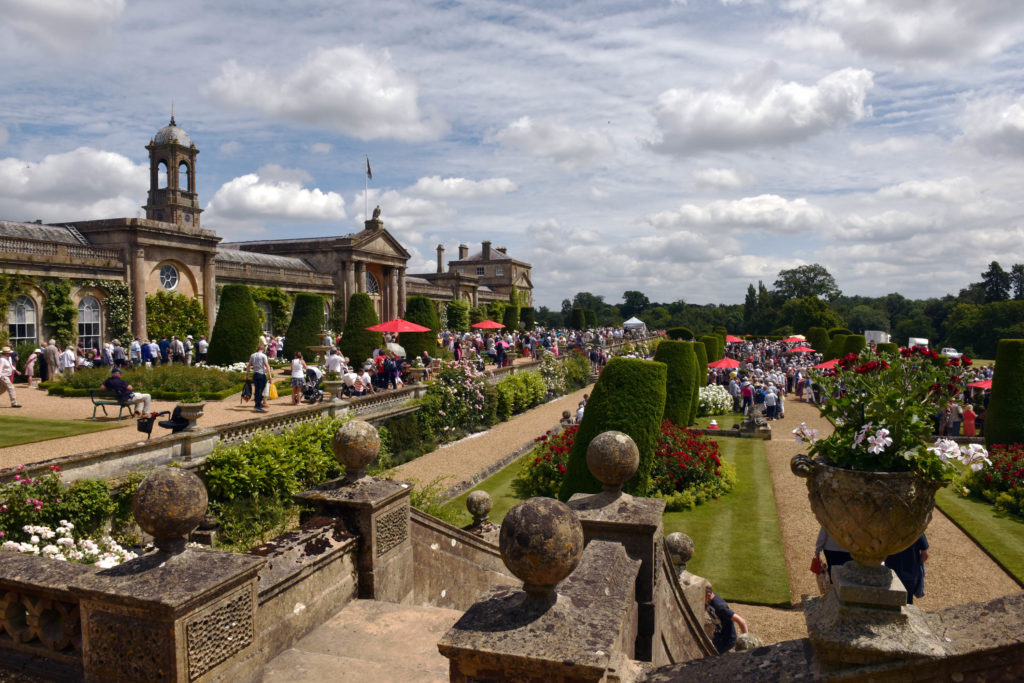 This year also sees my tenth anniversary as a specialist on the show and I’ve seen every one of those objects – and many, many more. I never tire of it, I always want more, and every filming day is like Christmas. You never know what you’ll unwrap next and you never know to which distant lands or parts of history you’ll be transported. It’s the closest to being Doctor Who that I’ll ever get to be.
This year also sees my tenth anniversary as a specialist on the show and I’ve seen every one of those objects – and many, many more. I never tire of it, I always want more, and every filming day is like Christmas. You never know what you’ll unwrap next and you never know to which distant lands or parts of history you’ll be transported. It’s the closest to being Doctor Who that I’ll ever get to be.
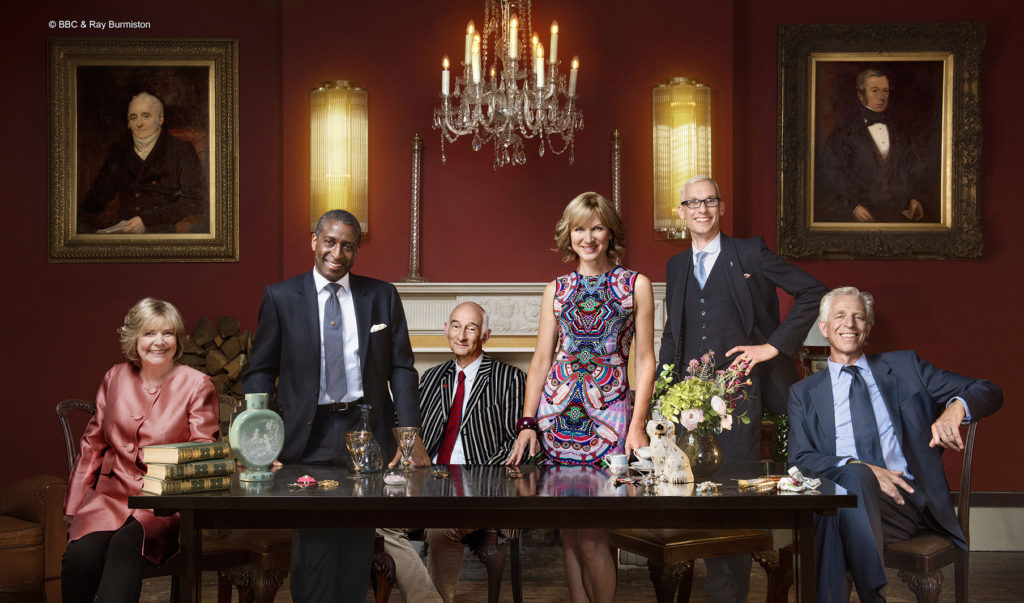 And at the core of it all is the object. But the Roadshow is about much more than that – the object is the springboard to the stories and all the people connected to it through history. It’s the key to unlock the story and start the journey – a journey that can have a fascinating, emotional or even shocking denouement. Something doesn’t have to be of monetary value to be of interest, as evocative and emotional stories can intrigue, entertain and affect us just as much. Value is a multi-faceted word, it’s not just financial value, but the social, economic, historical and emotional value that counts on the Roadshow.
And at the core of it all is the object. But the Roadshow is about much more than that – the object is the springboard to the stories and all the people connected to it through history. It’s the key to unlock the story and start the journey – a journey that can have a fascinating, emotional or even shocking denouement. Something doesn’t have to be of monetary value to be of interest, as evocative and emotional stories can intrigue, entertain and affect us just as much. Value is a multi-faceted word, it’s not just financial value, but the social, economic, historical and emotional value that counts on the Roadshow.
Stories & Queues
No matter who we are, we all love a story and we all love learning, something that probably goes back to when our parents read us bedtime stories, or when we discovered the pleasure of being transported to distant, fabled lands or directly into the shoes of amazing characters when reading books or watching films. As specialists, we take on the role of the storyteller.
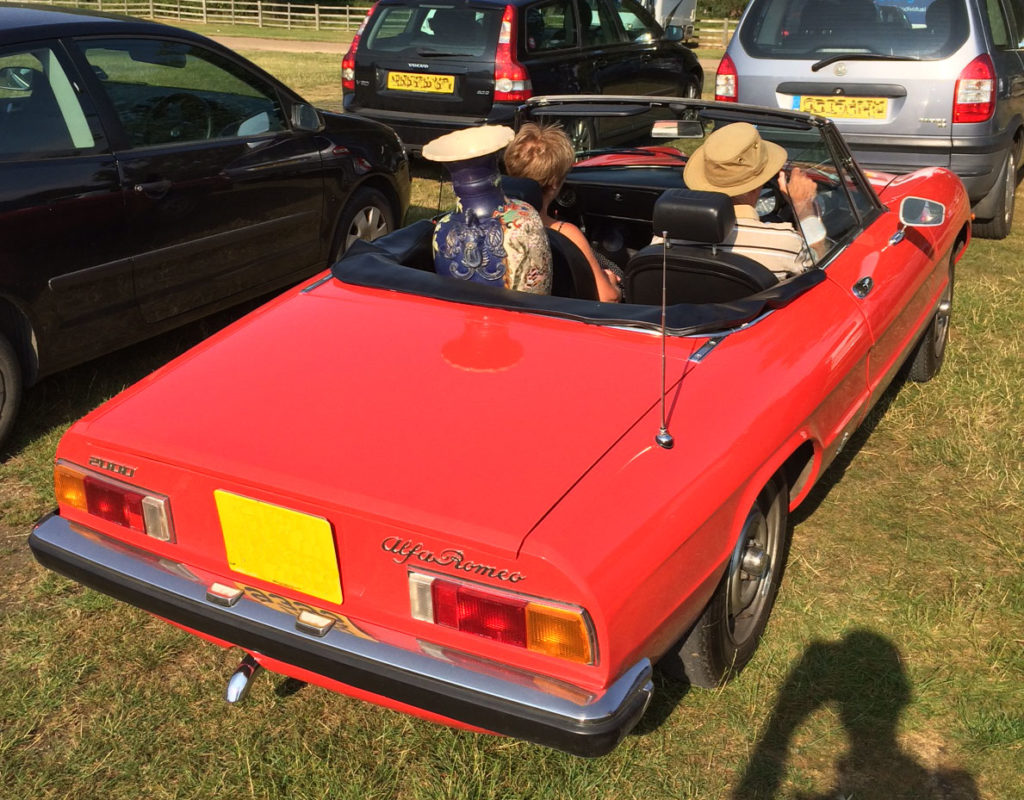 All the best things are simple, and the Roadshow is no different. Gates open at 9am, but the day often starts much earlier for those in the queue, some of whom may have camped overnight to be right at the front. Despite this, the faces of the people in the queue are as fresh as the dew on manicured lawn outside today’s grand country house location. Packages are clutched in anticipation of finding out what their much-loved but mysterious contents mean and are worth. Will they make it to camera? Specialists begin to arrive and pass the queue to their tables, smiling and saying good morning, and perhaps stopping to shake hands or make a short, potentially tantalizing, comment about an object being carried, or a the gilt frame of a picture peaking out from under blankets. How long is the queue already? How busy will today be? There’s a buzz in the air, and a good one. We’re all here for the same thing – to uncover stories.
All the best things are simple, and the Roadshow is no different. Gates open at 9am, but the day often starts much earlier for those in the queue, some of whom may have camped overnight to be right at the front. Despite this, the faces of the people in the queue are as fresh as the dew on manicured lawn outside today’s grand country house location. Packages are clutched in anticipation of finding out what their much-loved but mysterious contents mean and are worth. Will they make it to camera? Specialists begin to arrive and pass the queue to their tables, smiling and saying good morning, and perhaps stopping to shake hands or make a short, potentially tantalizing, comment about an object being carried, or a the gilt frame of a picture peaking out from under blankets. How long is the queue already? How busy will today be? There’s a buzz in the air, and a good one. We’re all here for the same thing – to uncover stories.
Kick-Off!
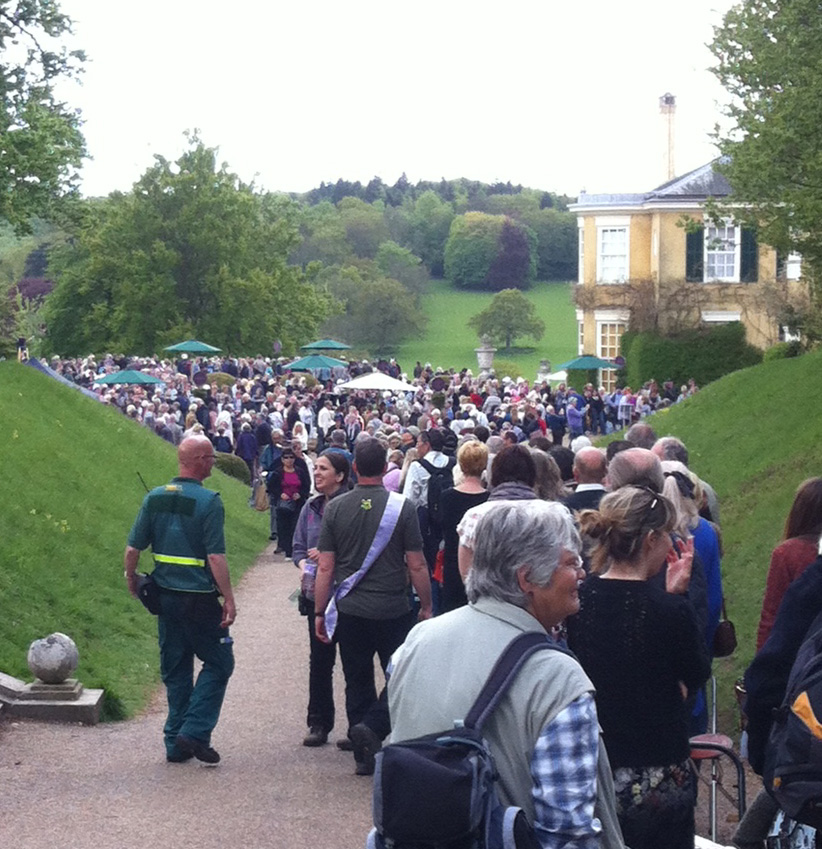 The moment the gates open, we specialists are ‘on’ and, although gates close at 4.30pm, the day only finishes when everyone who came has been seen by a specialist, no matter how late that is. With upwards of 4,000 people visiting on each day, and around 30 specialists, the pace is fast and unrelenting. Every visitor must have and enjoy their ‘Roadshow experience’.
The moment the gates open, we specialists are ‘on’ and, although gates close at 4.30pm, the day only finishes when everyone who came has been seen by a specialist, no matter how late that is. With upwards of 4,000 people visiting on each day, and around 30 specialists, the pace is fast and unrelenting. Every visitor must have and enjoy their ‘Roadshow experience’.
The main queue arrives at the reception desk where objects are briefly examined by an experienced team and then, depending on what type of objects they are, they and their owners are channeled into separate queues for that area, from Ceramics to Militaria, Jewellery, and Miscellaneous – the ‘catch-all’ area I work in. Friendships are often formed in the queues, which trill with laughter and conversation, with people often meeting up in the tea tent after to discuss what they found out about their treasures over a cuppa. A quintessentially British experience, it’s a sociable and fun atmosphere, full of smiles, stories and real life.
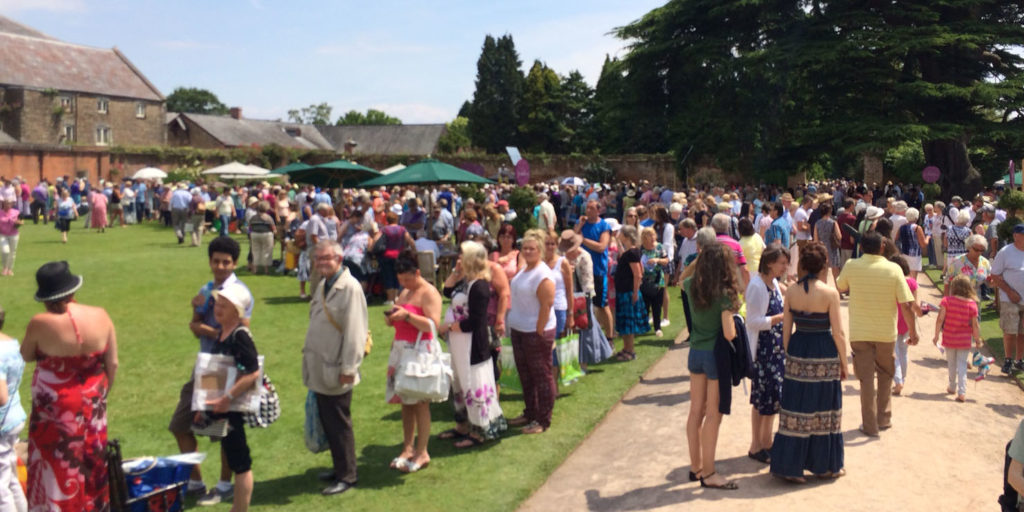 Keep an eye out for Fiona at reception too, as she loves nothing more than meeting people and talking about their treasures. All manner of pieces are shown to her across the day, from collections of autographs of yesteryear’s music hall celebrities collected by an aged relative who was a fan, to an antique ride-on lawnmower, to tickets for a trip to the moon offered in the 1970s by an American airline. But it’s not all fascinating chat, laughter and raised eyebrows, Fiona has a job to do and she’s often called away to film. I watched her record a link, wearing one of Shirley Bassey’s animal print coats that someone had brought along, in Wales a few years ago. The consummate professional, as one would expect, she devised and delivered her lines and actions full of mesmerizing passion in one single, short take.
Keep an eye out for Fiona at reception too, as she loves nothing more than meeting people and talking about their treasures. All manner of pieces are shown to her across the day, from collections of autographs of yesteryear’s music hall celebrities collected by an aged relative who was a fan, to an antique ride-on lawnmower, to tickets for a trip to the moon offered in the 1970s by an American airline. But it’s not all fascinating chat, laughter and raised eyebrows, Fiona has a job to do and she’s often called away to film. I watched her record a link, wearing one of Shirley Bassey’s animal print coats that someone had brought along, in Wales a few years ago. The consummate professional, as one would expect, she devised and delivered her lines and actions full of mesmerizing passion in one single, short take.
The Experts
 It takes a particular type of person to be a Roadshow specialist, and you have to have a combination of skills. A collector since I was a small boy, I got involved after being recommended by my friend Judith Miller with whom I wrote a series of antiques and collectables price guides. Before that I had worked in the Collectors Departments at top auctioneers Bonhams and Sotheby’s, which helped equip me for the Roadshow due to the huge variety of objects that passed through my hands. I’ve sold everything from vintage cameras and fountain pens to teddies and toys, bonsai trees, Napoleon’s spectacles and even a fossilized sea cucumber that was reputed to be (but wasn’t) a rather personal part of Rasputin! I see myself as a generalist, with some specialist knowledge, having published a number of books on new areas of modern design. Even though I live surrounded by Georgian and Victorian furniture, which has never been more affordable, I’m a 20th century boy at heart. There’s always more to learn and that’s the thing I love most about my job.
It takes a particular type of person to be a Roadshow specialist, and you have to have a combination of skills. A collector since I was a small boy, I got involved after being recommended by my friend Judith Miller with whom I wrote a series of antiques and collectables price guides. Before that I had worked in the Collectors Departments at top auctioneers Bonhams and Sotheby’s, which helped equip me for the Roadshow due to the huge variety of objects that passed through my hands. I’ve sold everything from vintage cameras and fountain pens to teddies and toys, bonsai trees, Napoleon’s spectacles and even a fossilized sea cucumber that was reputed to be (but wasn’t) a rather personal part of Rasputin! I see myself as a generalist, with some specialist knowledge, having published a number of books on new areas of modern design. Even though I live surrounded by Georgian and Victorian furniture, which has never been more affordable, I’m a 20th century boy at heart. There’s always more to learn and that’s the thing I love most about my job.
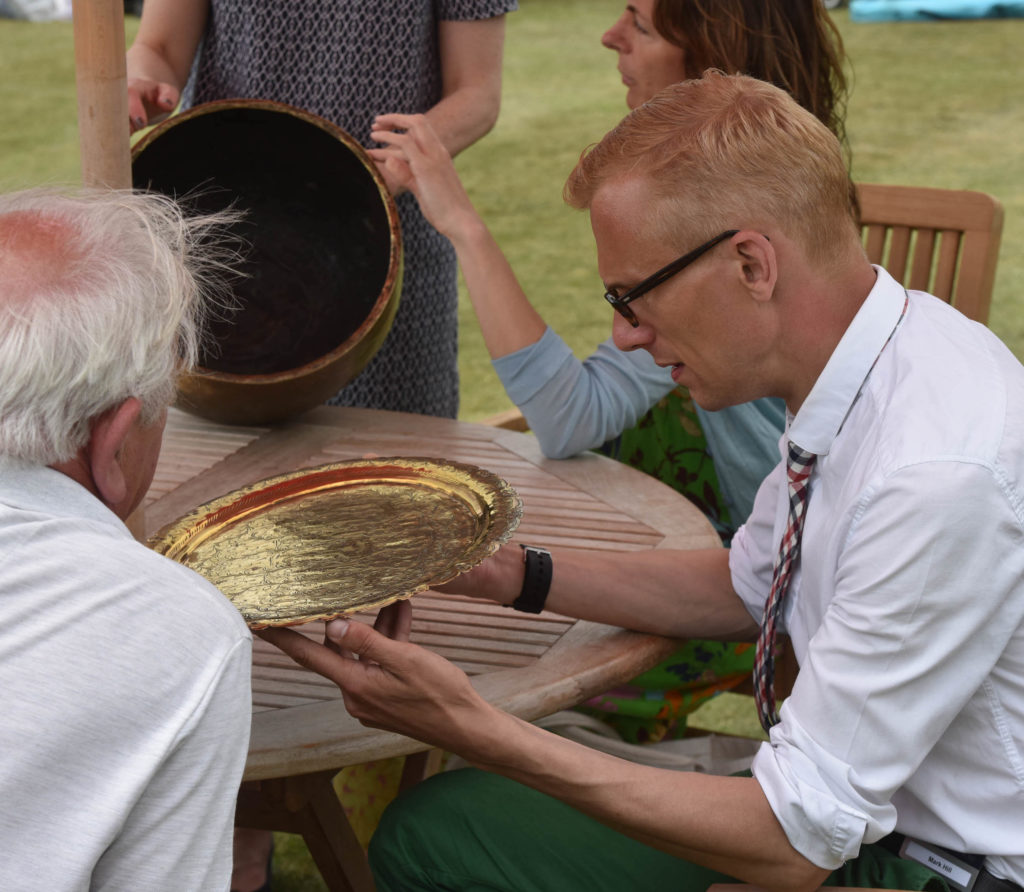 An in-depth knowledge of your subject area and the state of the market are essential, but you also have to be a ‘people person’; have the ability to listen, be compassionate and, quite often, be able let people down gently but yet try to surprise and entertain them with something they may not have known. A steady hand is also essential, but we’re used to handling valuable items from our day jobs which vary from auctioneer to dealer, curator and lecturer to researcher and author. I’ve never heard of anything being broken by a specialist, but things can get broken en route to a specialist’s table because they weren’t packed well enough. Last year, one lady wiped £500 off her Clarice Cliff cup and saucer by not packing it properly!
An in-depth knowledge of your subject area and the state of the market are essential, but you also have to be a ‘people person’; have the ability to listen, be compassionate and, quite often, be able let people down gently but yet try to surprise and entertain them with something they may not have known. A steady hand is also essential, but we’re used to handling valuable items from our day jobs which vary from auctioneer to dealer, curator and lecturer to researcher and author. I’ve never heard of anything being broken by a specialist, but things can get broken en route to a specialist’s table because they weren’t packed well enough. Last year, one lady wiped £500 off her Clarice Cliff cup and saucer by not packing it properly!
The day requires constant concentration, but it’s also an indulgence and a little like being in a bubble. We don’t have to answer emails or the phone, tend our shops or do our books, so we can focus purely on what we love and what fires our hearts and minds. But, because of all of this, it’s utterly exhausting across a full day. But those who work the hardest in my opinion are the BBC production crew behind the show. It operates like a military operation and it’s these hugely talented and patient people, from technicians to floor managers, who really make the Roadshow machine work as well and as smoothly as it does.
Building The Series
There will be eleven filming days this season, from Spring to Autumn with a break over August, plus two filming days for special themed shows. The famous Roadshow lorry criss-crosses the country from Scotland to the Isle of Wight, and from Suffolk to Northern Ireland.
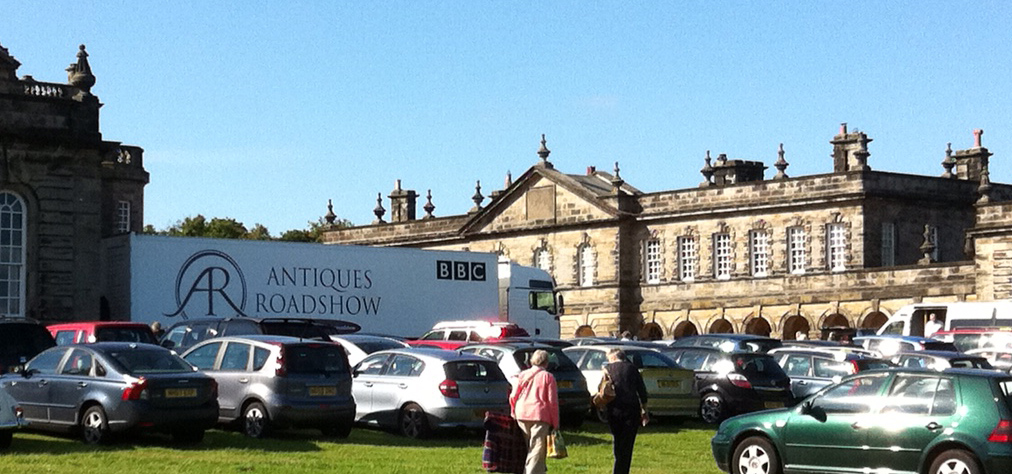 Back at the Roadshow office in Bristol, many hundreds of hours of footage from three separate film crews are edited down to craft a full series of one-hour long programmes, including compilation episodes. A series may also have special episodes, built around a theme or to commemorate an event or person such as The Holocaust or Her Majesty, and these have their own filming days. It’s a long day for the filming and technical crew too, as filming starts at 9am and is continuous until the last slot wraps at 7pm.
Back at the Roadshow office in Bristol, many hundreds of hours of footage from three separate film crews are edited down to craft a full series of one-hour long programmes, including compilation episodes. A series may also have special episodes, built around a theme or to commemorate an event or person such as The Holocaust or Her Majesty, and these have their own filming days. It’s a long day for the filming and technical crew too, as filming starts at 9am and is continuous until the last slot wraps at 7pm.
What’s Your Story?
Although much of what we see each day is seen at every Roadshow, every story is different. It may be yet another transfer-printed plate from one of the famous Staffordshire potteries, but what does the owner have to say? Her mother may have been a paintress, and she may offer insight into life inside a Victorian pottery factory. Although fascinating, that won’t affect the financial value, but is it perhaps a scarce trial piece? If so, will it be sought-after by collectors?
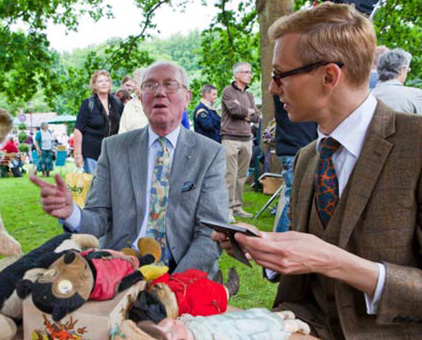 Much of our time is spent letting the object unlock the real story, and explaining that the internet isn’t always the last and only word in research. In today’s digital age, many people have looked things up at some point. All we’re doing is translating, allowing the object to identify and place itself. If it’s inherited, it’s great when we can reveal a link to a family member that the owner hadn’t realised by putting the right date on it, or revealing where it came from. Someone may have been told it was great granny’s ceramic figurine, but the ‘Made in Occupied Japan’ mark indicates it was made there from around 1945-52. Then the owner remembers an uncle in the merchant navy who travelled to the Far East after the war, and it all fits into place. This is just a simple example, but like giving a higher than expected value, it’s that smile and expression of wonderment and understanding that’s at the heart of the Roadshow magic.
Much of our time is spent letting the object unlock the real story, and explaining that the internet isn’t always the last and only word in research. In today’s digital age, many people have looked things up at some point. All we’re doing is translating, allowing the object to identify and place itself. If it’s inherited, it’s great when we can reveal a link to a family member that the owner hadn’t realised by putting the right date on it, or revealing where it came from. Someone may have been told it was great granny’s ceramic figurine, but the ‘Made in Occupied Japan’ mark indicates it was made there from around 1945-52. Then the owner remembers an uncle in the merchant navy who travelled to the Far East after the war, and it all fits into place. This is just a simple example, but like giving a higher than expected value, it’s that smile and expression of wonderment and understanding that’s at the heart of the Roadshow magic.
Quirky Finds
Unusual objects abound. I wasn’t joking about the unicorn horn I mentioned above. Of course, these long, elegantly tapered barley-twist horns aren’t really from a unicorn, they’re from a Narwhal, an Arctic dwelling whale. In centuries past, their single tusks were thought to be from unicorns and were highly prized by monarchs, often being held in their treasuries as revered objects that brought good fortune and protection. Although we know better today and do not condone the slaughter of animals, antique versions are still prized and they can fetch well over £1,000 a foot – which adds up when the longest can top 10 feet!
 Hilary Kay, a much-loved veteran of the Roadshow who joined the team in 1978, says her most bizarre find was a mermaid – really a form of fantasy taxidermy, like the rather scary looking example shown here. Historically held in high esteem like unicorns’ horns, they were often exhibited in travelling shows like P.T. Barnum’s circus. Today, it’s thought that they were made by fishermen in Japan, Fiji and the East Indies, who stitched a monkey’s head, torso and arms to a fish’s body. Most have perished over the centuries since they were made and they’re very rare but, as Hilary says, “How do you value a mermaid?!”
Hilary Kay, a much-loved veteran of the Roadshow who joined the team in 1978, says her most bizarre find was a mermaid – really a form of fantasy taxidermy, like the rather scary looking example shown here. Historically held in high esteem like unicorns’ horns, they were often exhibited in travelling shows like P.T. Barnum’s circus. Today, it’s thought that they were made by fishermen in Japan, Fiji and the East Indies, who stitched a monkey’s head, torso and arms to a fish’s body. Most have perished over the centuries since they were made and they’re very rare but, as Hilary says, “How do you value a mermaid?!”
Of course, not everything is a delightful surprise and worth more than the owner thought. Most people come with no expectations, or with a memory of having seen something similar on a previous Roadshow. Fakes and copies do pop up from time to time. Even though an Art Deco figurine of a delicate dancer may look like it’s made from ivory and bronze, designed by one of the greats like Ferdinand Preiss and worth thousands, their one is made from a metal alloy and an early ivory-coloured plastic. It’s almost the equivalent of a high street copy of a couture dress today. Providing it’s a period piece and not a modern fake, it could still be worth around a hundred pounds or so at auction.
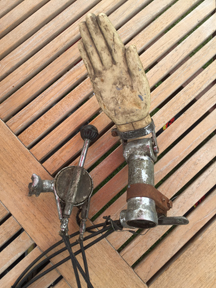 It’s still a great looker, and very of the time. There’s usually always a positive in there somewhere. Antiques and collectables aren’t tins of beans, so aren’t all the same and have fixed prices, and every specialist offers their opinion based on their experience, knowledge and expertise.
It’s still a great looker, and very of the time. There’s usually always a positive in there somewhere. Antiques and collectables aren’t tins of beans, so aren’t all the same and have fixed prices, and every specialist offers their opinion based on their experience, knowledge and expertise.
Some stories can raise a laugh. One lady came to my table at Trentham Gardens this year with her ‘mystery object’, a plastic hand attached to a mechanical hinged metal bracket, that she had found discarded in a relative’s shed. I revealed that it was an early ‘trafficator’, a now obsolete flip-up or illuminated device that was built into, or attached to, the side of a car and operated to indicate which direction the car was about to turn in. When she went bright red and burst out laughing, I had to know why. She told me that she and her husband thought it was an antique marital aid! The mind boggles!
The Roadshow At 40
How has Roadshow changed over the years? Nobody misses the smelly, boring leisure centres of old, which have been replaced by gorgeous historic locations like country houses or city civic centres. Hilary says that the biggest change for her is that we’re now appraising items that weren’t even made when the show began. This shows how the programme has kept abreast of changes in collecting and the marketplace.
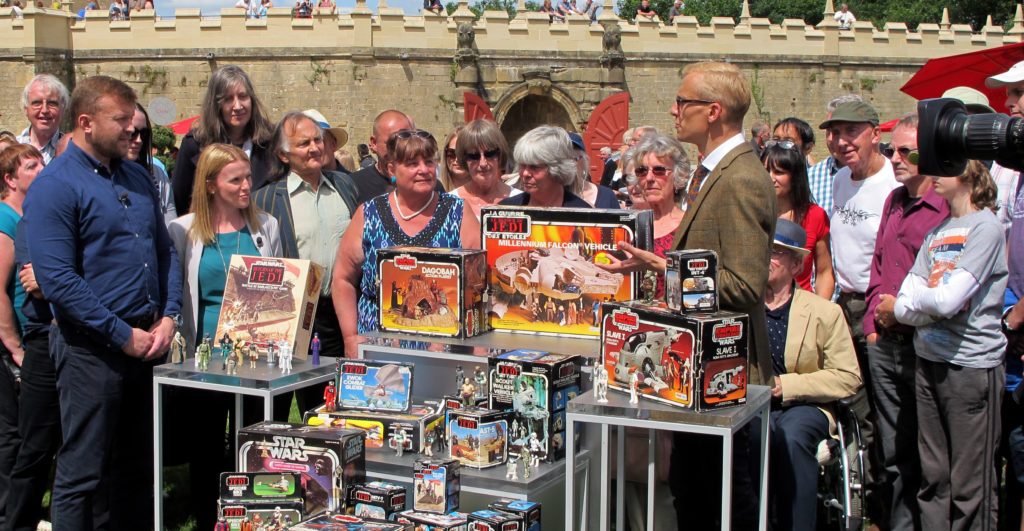 It’s across the board too, and good examples are 1970s silver designed by Stuart Devlin, and 1970s or 80s ceramics which are very much in vogue today with a retro-loving crowd. Or even a much-loved childhood collection of Star Wars figures! Eric Knowles, who has been on the show for 34 years, misses old specialist colleagues, such as Barbara Morris or Bernard Price, who were both his mentors as well as fonts of knowledge and experience.
It’s across the board too, and good examples are 1970s silver designed by Stuart Devlin, and 1970s or 80s ceramics which are very much in vogue today with a retro-loving crowd. Or even a much-loved childhood collection of Star Wars figures! Eric Knowles, who has been on the show for 34 years, misses old specialist colleagues, such as Barbara Morris or Bernard Price, who were both his mentors as well as fonts of knowledge and experience.
Delivering Values
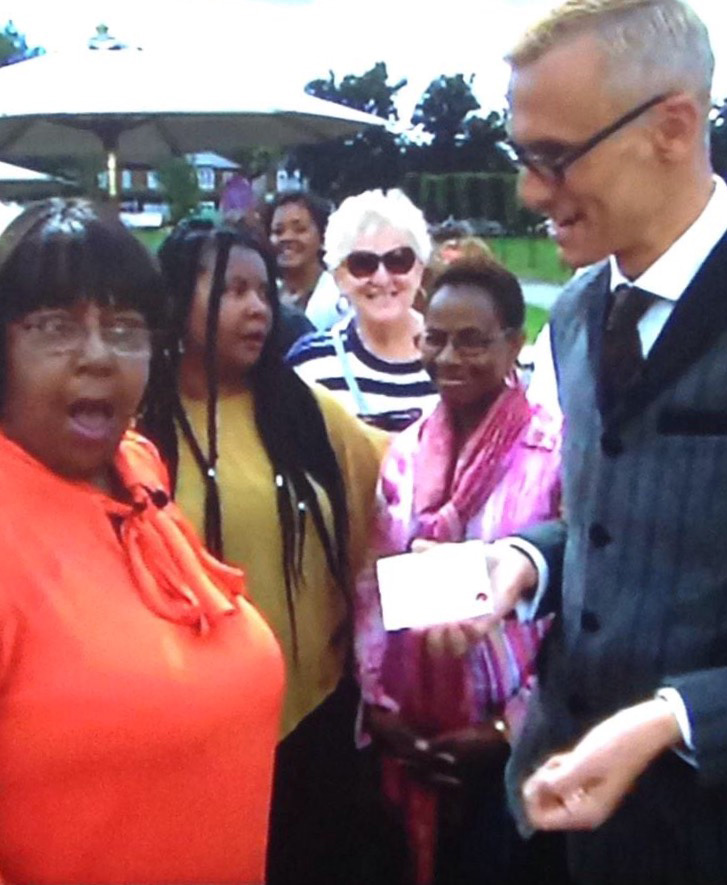 I grew up watching the Roadshow, so it’s an honour being able to work on the show amongst people I have respected and admired for most of my life. Sitting as a child, rapt at the knowledge conveyed and the stories told, I did what we all love to do – listen in and try to guess the value of the object inherited or bought for a song. Will it be £30, £300 or £30,000? It’s the legendary Roadshow moment that I overhear in conversations on the bus on Monday mornings, or that’s told over countless office water coolers across the world.
I grew up watching the Roadshow, so it’s an honour being able to work on the show amongst people I have respected and admired for most of my life. Sitting as a child, rapt at the knowledge conveyed and the stories told, I did what we all love to do – listen in and try to guess the value of the object inherited or bought for a song. Will it be £30, £300 or £30,000? It’s the legendary Roadshow moment that I overhear in conversations on the bus on Monday mornings, or that’s told over countless office water coolers across the world.
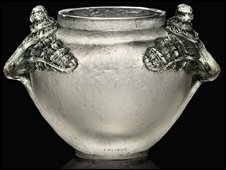 Eric told me about one particularly memorable piece that he found at Dumfries House. A lady had attended a car boot sale and bought a plant for £1. The plant was sitting in a glass vase (left), and the seller threw that in for free. Unable to believe what he was looking at, Eric revealed to her that it was a unique cire perdue (lost wax) vase by the esteemed Art Deco glass designer René Lalique. His valuation? A cool £25,000. It’s exactly what everyone dreams about happening to them. For Eric, it was an incredible find, and one that was transported from a damp day in Scotland to a top French museum when it sold at auction for £26,000. But that’s not the highest value given so far. At Towneley Hall in Lancashire, I valued a Tiffany glass panel at £250,000 and, at The Sage in Gateshead, Philip Mould valued an ‘Angel of the North’ sculpture at a staggering £1m. What will we find next?
Eric told me about one particularly memorable piece that he found at Dumfries House. A lady had attended a car boot sale and bought a plant for £1. The plant was sitting in a glass vase (left), and the seller threw that in for free. Unable to believe what he was looking at, Eric revealed to her that it was a unique cire perdue (lost wax) vase by the esteemed Art Deco glass designer René Lalique. His valuation? A cool £25,000. It’s exactly what everyone dreams about happening to them. For Eric, it was an incredible find, and one that was transported from a damp day in Scotland to a top French museum when it sold at auction for £26,000. But that’s not the highest value given so far. At Towneley Hall in Lancashire, I valued a Tiffany glass panel at £250,000 and, at The Sage in Gateshead, Philip Mould valued an ‘Angel of the North’ sculpture at a staggering £1m. What will we find next?
Capturing That Moment
Obviously, not everything can be filmed. The man in charge of the decision is Simon Shaw, our Series Editor of over 10 years. If an interesting object comes to a specialist’s table, we’ll tailor our responses so to not reveal anything so we can save the reveal for the camera. If the owner is happy to film, then we’ll pitch the story in to Simon. Whatever happens next, the owner always learns the story behind, and value of, their piece – even if they don’t make it to film.
 If a filming slot is won, it’s back to valuing and revealing stories at their table for the specialist, while the owner goes off to relax over tea, biscuits and cake. We only meet again in front of the camera. Before we film, we check our facts carefully. Although we have a mobile library and access to the internet, perhaps the richest source of information is each other. Across the day, you’ll see specialists wandering from table to table while carefully cradling an object. We’re looking for a particular colleague with a professional or personal knowledge who may be able to give more information or confirm thoughts. I say personal knowledge, as many specialists have their own passions outside their professional lives. Eric Knowles is an authority on early textiles, and furniture specialist John Bly is the same for silver. As Eric says about the team, which is really like one big family, “It’s a great think-tank”.
If a filming slot is won, it’s back to valuing and revealing stories at their table for the specialist, while the owner goes off to relax over tea, biscuits and cake. We only meet again in front of the camera. Before we film, we check our facts carefully. Although we have a mobile library and access to the internet, perhaps the richest source of information is each other. Across the day, you’ll see specialists wandering from table to table while carefully cradling an object. We’re looking for a particular colleague with a professional or personal knowledge who may be able to give more information or confirm thoughts. I say personal knowledge, as many specialists have their own passions outside their professional lives. Eric Knowles is an authority on early textiles, and furniture specialist John Bly is the same for silver. As Eric says about the team, which is really like one big family, “It’s a great think-tank”.
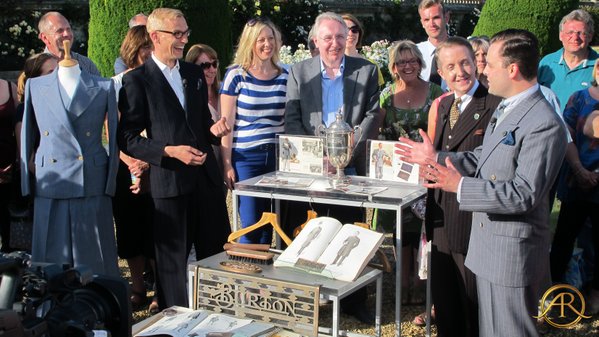 Filming is a very unnatural activity, so we’re lucky that so many people take to it so well. Often all said and done in 20 minutes, most people are surprised about how quick and even fun it all is. I’ve learnt to plan nothing except my ‘in’ and my ‘out’ lines, everything that happens in between can’t be controlled, and nor should it be. It needs to be natural, and the owner’s character and story should shine through. Hopefully, honest emotions will come into play as suits the story – be they laughter, shock or even tears. You have to think fast and not use words one may use in normal conversation. It might be “bloody rare” but that won’t do for primetime BBC One!
Filming is a very unnatural activity, so we’re lucky that so many people take to it so well. Often all said and done in 20 minutes, most people are surprised about how quick and even fun it all is. I’ve learnt to plan nothing except my ‘in’ and my ‘out’ lines, everything that happens in between can’t be controlled, and nor should it be. It needs to be natural, and the owner’s character and story should shine through. Hopefully, honest emotions will come into play as suits the story – be they laughter, shock or even tears. You have to think fast and not use words one may use in normal conversation. It might be “bloody rare” but that won’t do for primetime BBC One!
Beyond The Roadshow
Out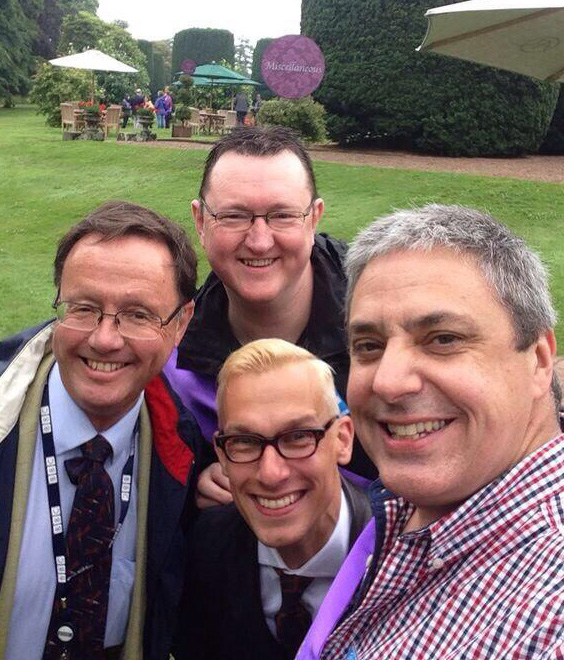 side the show, specialists lead normal lives of course, but the Roadshow pops up regularly. Paul Atterbury, who has been on the show for 25 years, tells me that hardly a week goes by where he doesn’t have at least a couple of unexpected conversations with people about their favourite items, moments on the show, or antiques they may own. As many of us appear in around 6 million people’s homes most Sunday evenings across a year, he says that we’re almost like the cast of a soap opera, we’re “familiar people doing familiar things”. Anyone will stop him for a chat, from ticket collectors to supermarket shoppers, students and builders. The Roadshow truly crosses all cultural and age boundaries and has universal appeal. “It’s a humbling privilege to be a part of a show that is loved by so many.”, he says. In today’s quirky, media-led world, sometimes responses are even more unexpected. Paul has appeared in Viz magazine and, when appraising a toilet on the show, he was described as something along the lines of ‘The Antiques Roadshow’s toilet expert in a revolting yellow jacket’ in an episode of Channel 4’s Gogglebox.
side the show, specialists lead normal lives of course, but the Roadshow pops up regularly. Paul Atterbury, who has been on the show for 25 years, tells me that hardly a week goes by where he doesn’t have at least a couple of unexpected conversations with people about their favourite items, moments on the show, or antiques they may own. As many of us appear in around 6 million people’s homes most Sunday evenings across a year, he says that we’re almost like the cast of a soap opera, we’re “familiar people doing familiar things”. Anyone will stop him for a chat, from ticket collectors to supermarket shoppers, students and builders. The Roadshow truly crosses all cultural and age boundaries and has universal appeal. “It’s a humbling privilege to be a part of a show that is loved by so many.”, he says. In today’s quirky, media-led world, sometimes responses are even more unexpected. Paul has appeared in Viz magazine and, when appraising a toilet on the show, he was described as something along the lines of ‘The Antiques Roadshow’s toilet expert in a revolting yellow jacket’ in an episode of Channel 4’s Gogglebox.
Even though I’ve been a member of the team for a decade, I still feel like the new boy, particularly as this British institution has now reached its 40th anniversary. It’s been around for nearly as long as I have! I still get nervous before every show, and I know I’m not the only one. But I wouldn’t have it any other way, it keeps me on my toes. Working on the Roadshow really is one of the highlights of my year and I always look forward to it. Who knows what treasures we’ll unwrap, what journeys we’ll embark on and what stories will be uncovered – come along and be part of it all.
To view filming dates and venues for the BBC Antiques Roadshow in 2017, and to find out which one is near you, please click here.
An adapted version of this article was originally published in the Daily Mail ‘Weekend’ magazine on 12th March 2016. To read it, please click here. With thanks to the BBC for use of some photographs.

